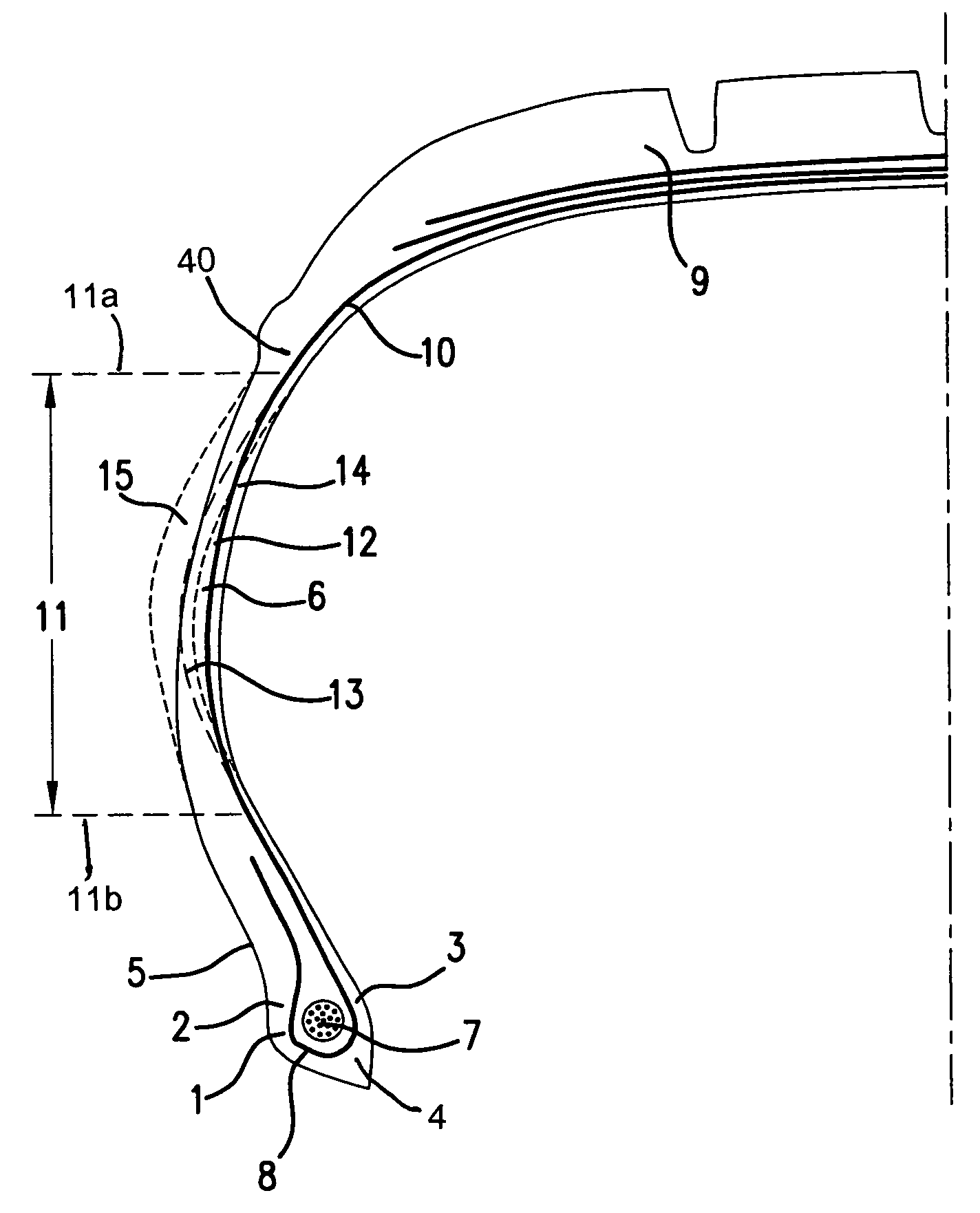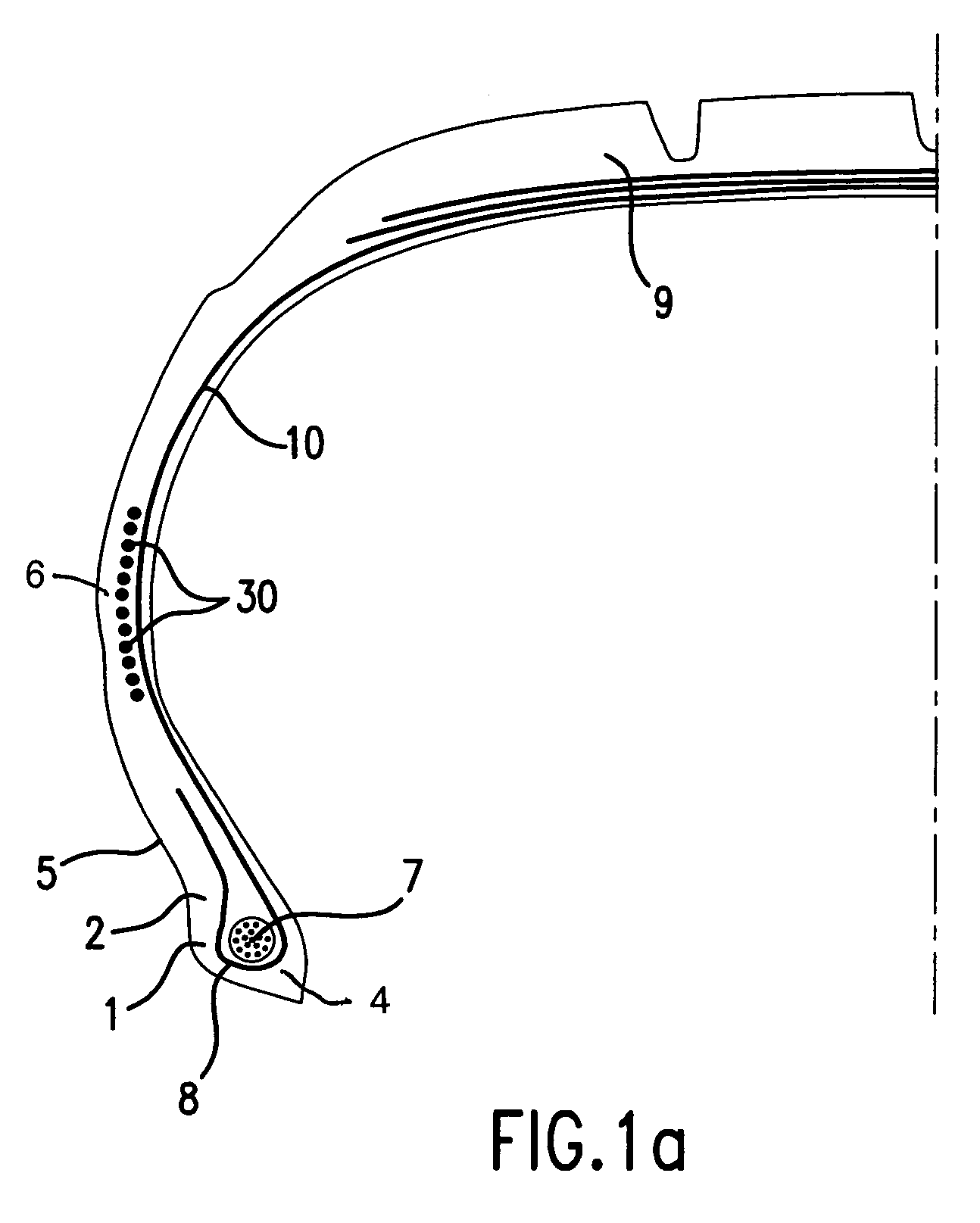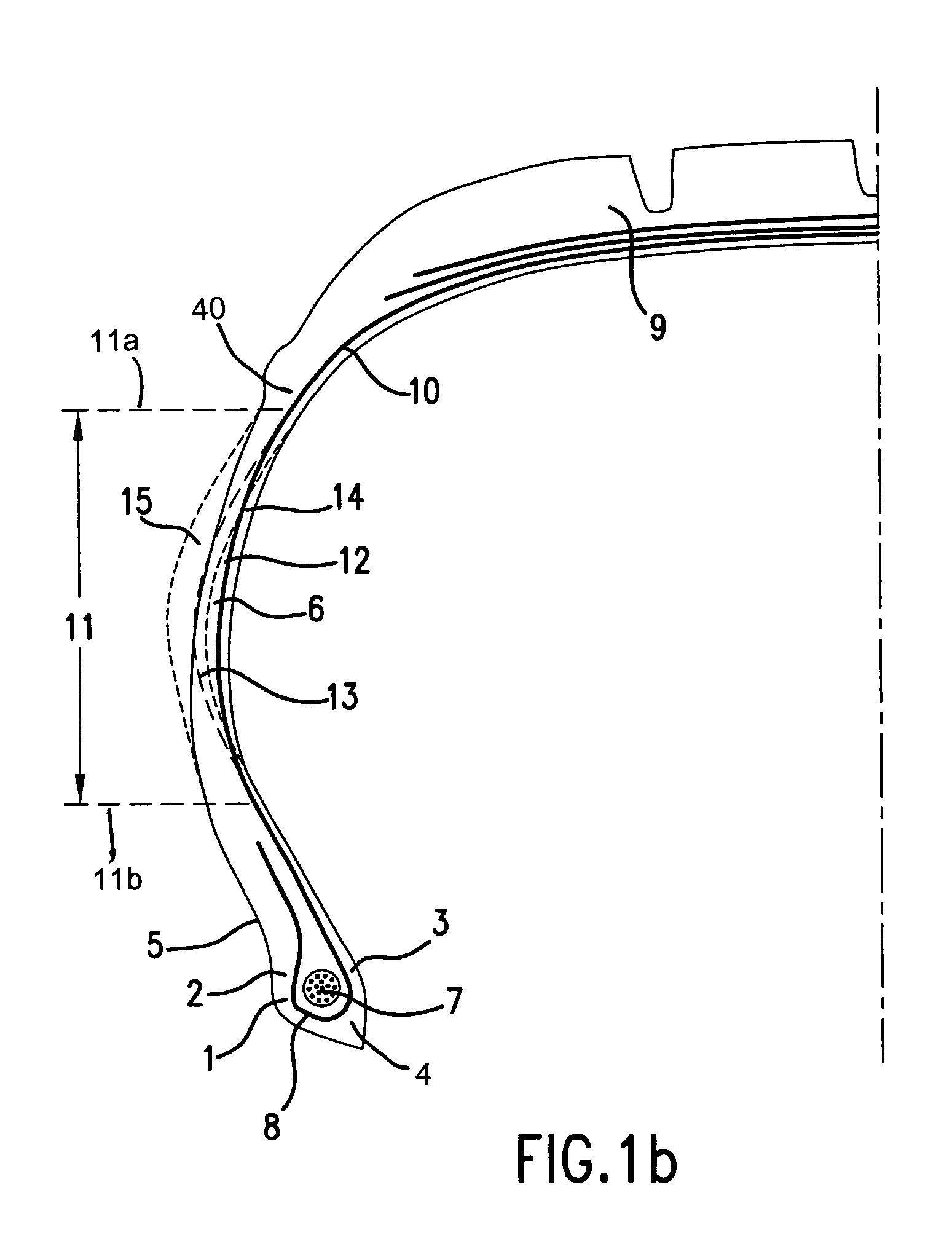Extended mobility tire with undulating sidewalls
a technology of undulating sidewalls and extended mobility tires, which is applied in the field of extended mobility tires with undulating sidewalls, can solve the problems of limiting the impact of this solution, entail considerable disadvantages in terms of rolling resistance and comfort, and detriment of everyday operation, so as to prevent total sagging of sidewalls, and reduce the effect of sagging
- Summary
- Abstract
- Description
- Claims
- Application Information
AI Technical Summary
Benefits of technology
Problems solved by technology
Method used
Image
Examples
Embodiment Construction
[0028]Tire reinforcement armatures or tire reinforcements are currently—and most frequently—formed by stacking one or more plies conventionally designated “carcass plies”, “crown plies”, etc. This way of designating reinforcement armatures stems from the manufacturing process, which consists of making a series of semi-finished products in the form of plies, provided with, often longitudinal, cord reinforcements, which are then assembled or stacked so as to build a tire blank. The plies are made flat, with large dimensions, and are then cut as a function of the dimensions of a given product. The plies are also assembled substantially flat in a first phase. The blank thus produced is then shaped into the toroidal profile typical of tires. The semi-finished products known as “finishing products” are then applied to the blank, in order to obtain a product which is ready for vulcanisation.
[0029]Such a “conventional” type of process involves, in particular for the tire blank manufacturing...
PUM
 Login to View More
Login to View More Abstract
Description
Claims
Application Information
 Login to View More
Login to View More - R&D
- Intellectual Property
- Life Sciences
- Materials
- Tech Scout
- Unparalleled Data Quality
- Higher Quality Content
- 60% Fewer Hallucinations
Browse by: Latest US Patents, China's latest patents, Technical Efficacy Thesaurus, Application Domain, Technology Topic, Popular Technical Reports.
© 2025 PatSnap. All rights reserved.Legal|Privacy policy|Modern Slavery Act Transparency Statement|Sitemap|About US| Contact US: help@patsnap.com



